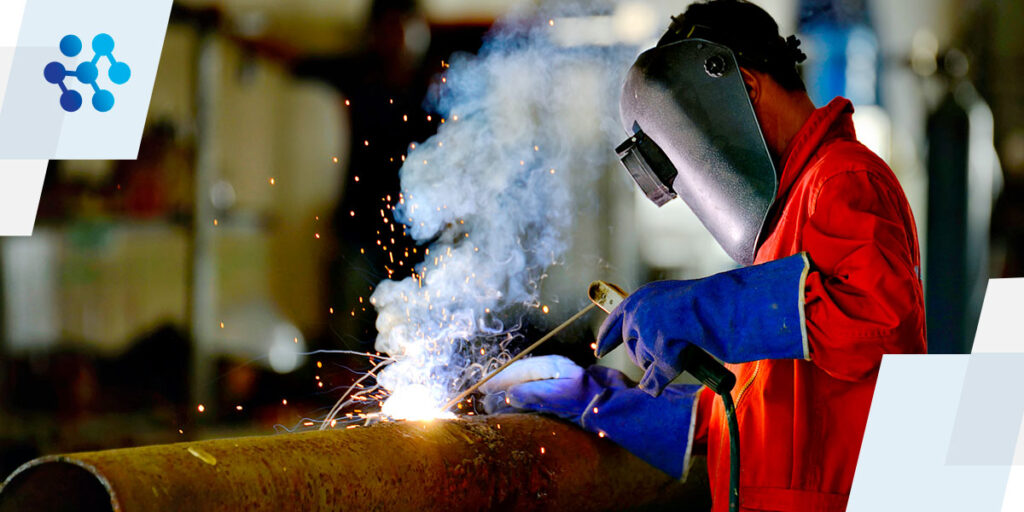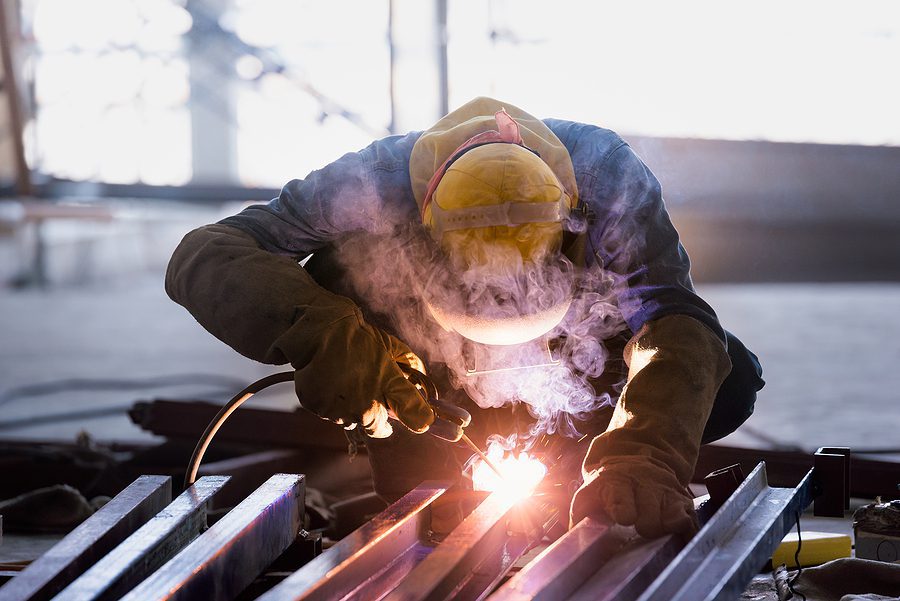Steps to take when encountering porosity in Montana Mobile Welding and Repair Welding
Usual Welding Fixing Issues and How to Address Them Properly
Welding repair work often come across a variety of problems that can endanger the stability of the end product. Common issues include inadequate infiltration, porosity, and misalignment, among others. Each defect presents one-of-a-kind challenges that call for particular methods for resolution. Understanding these concerns is crucial for welders aiming to improve their end results and abilities. This conversation will certainly check out these usual welding repair concerns and efficient techniques to address them.
Inadequate Penetration
Poor infiltration occurs when the weld steel fails to completely fuse with the base product, causing weak joints and possible architectural failings. This concern commonly originates from not enough heat input, wrong electrode angle, or improper welding rate. Welders might experience inadequate penetration due to a miscalculation of the essential specifications for a specific product thickness or type. In addition, contamination on the base material's surface area can impede reliable bonding, worsening the trouble. To address inadequate infiltration, welders must guarantee ideal setups on their tools and preserve a tidy work surface. Routine inspection of welds is recommended to identify any deficiencies early, enabling for timely corrections and the avoidance of compromised architectural stability in welded settings up.
Porosity
Porosity is a typical defect in welded joints that materializes as small gas bubbles entraped within the weld steel. This defect can jeopardize the integrity of the weld, resulting in lowered strength and possible failing under tension. Montana Mobile Welding and Repair Welding. Porosity usually arises from contamination, wetness, or incorrect welding strategies, which enable gases to leave into the molten weld pool. To address porosity, welders should ensure correct surface area prep work, maintain a tidy working environment, and use ideal welding parameters. In addition, choosing the appropriate filler material and securing gas can minimize gas entrapment. Routine evaluation and screening of welds can aid identify porosity early, assuring prompt restorative actions are taken, consequently protecting the top quality and integrity of the bonded structure
Imbalance
Imbalance in welding can emerge from different variables, consisting of improper configuration and thermal growth. Recognizing the origin is crucial for effective resolution. Numerous adjustment techniques are readily available to straighten elements and guarantee architectural honesty.
Sources of Imbalance
Welding imbalance frequently originates from a selection of underlying concerns that can compromise structural integrity. One key cause is improper fit-up of components before welding, which can cause gaps and irregular surface areas. Variations in thermal development during the welding process can also result in distortion, especially if the products being signed up with have different coefficients of growth. In addition, poor clamping and fixturing may fail to hold components securely in area, resulting in movement throughout welding. Badly conserved tools, including welding equipments and tools, may present inconsistencies in the weld grain, additional contributing to misalignment. Driver error, stemming from insufficient training or experience, can likewise play a substantial duty in developing misaligned welds.

Correction Techniques Readily Available
Resolving misalignment successfully requires a mix of rehabilitative strategies customized to the specific issues at hand. One common approach is making use of fixtures or jigs to hold components in the proper position during welding, making certain regular positioning. In addition, pre-heating the products can help in reducing distortion and enhance fit-up. For substantial imbalance, mechanical adjustment strategies, such as using hydraulic jacks or clamps, can be utilized to deal with the placement prior to welding. Post-weld warm treatment might likewise be needed to soothe tensions brought on by misalignment. Mindful inspection and adjustment throughout the configuration stage can prevent imbalance concerns from coming to be substantial issues, advertising a smoother welding process and improving overall architectural integrity.
Distortion
Distortion is an usual difficulty in welding that can emerge from numerous variables, consisting of unequal heating and air conditioning. Recognizing the root causes of distortion is vital for applying effective prevention strategies. Resolving this concern not just boosts structural honesty however also improves the total top quality of the weld.
Root causes of Distortion
When subjected to the intense warmth of welding, products often go through changes that can bring about distortion. This sensation mainly emerges from thermal development and contraction throughout the welding procedure. As the weld location warms up, the material expands; upon air conditioning, it contracts, which can produce interior anxieties. Furthermore, uneven home heating throughout a work surface can intensify these anxieties, resulting in bending or flexing. The type of material additionally plays a substantial duty; metals with varying thermal conductivity and coefficients of expansion might react differently, leading to unpredictable distortions. Bad joint layout and poor fixturing can contribute to misalignment throughout welding, increasing the likelihood of distortion. Recognizing these causes is necessary for effective welding repair and avoidance methods.
Avoidance Techniques
Reliable prevention techniques for distortion throughout welding focus on managing warm input and ensuring correct joint design. Maintaining a constant warm input helps to decrease thermal development and contraction, which can result in distortion. Using strategies such as preheating the work surface can likewise reduce the temperature gradient, promoting consistent home heating. In addition, selecting proper joint styles, such as T-joints or lap joints, can improve security and reduce anxiety focus. Applying appropriate fixturing to protect the workpieces in position better aids in preserving alignment during the welding process. Ultimately, staggered welding sequences can distribute warmth extra evenly, stopping local distortion. By applying these strategies, welders can substantially decrease the possibility of distortion and enhance the general top quality of their welds.
Splitting
Splitting is an usual issue encountered in welding repair work, commonly arising from numerous aspects such as inappropriate air conditioning prices, product choice, or inadequate joint prep work. The occurrence of cracks can greatly endanger the stability of the weld, causing potential failures during procedure. To resolve this problem, welders need to first examine the source, making certain that products work and properly picked for the particular application. Additionally, regulating the air conditioning rate throughout the welding process is vital; quick air conditioning can cause stress and cause splitting. Correct joint layout and prep work also add to reducing the danger. Executing these methods can enhance weld top quality and toughness, inevitably minimizing the chance of breaking in completed weldments.

Incomplete Fusion
A significant concern in welding repair work is insufficient combination, which happens when the weld steel does not effectively bond with the base material or previous weld passes - Montana Mobile Welding and Repair Belgrade Welding. This defect can lead to weak points in the joint, potentially jeopardizing the stability of the bonded structure. Factors adding to incomplete combination consist of inadequate warmth input, inappropriate welding technique, and contamination of the surface areas being signed up with. To resolve this concern properly, welders should assure correct pre-weld cleansing and surface area preparation, as well as adjust their welding criteria to attain appropriate penetration and combination. Routine inspection during the welding process can additionally help identify incomplete combination early, permitting timely corrective actions to enhance the general quality of the weld
Overheating
While welding repair services can enhance architectural stability, overheating presents a significant obstacle that can result in material destruction. Excessive warm during welding can change the mechanical homes of steels, resulting in minimized strength, enhanced brittleness, and warping. This sensation is specifically crucial in high-stress applications where architectural reliability is vital. Determining getting too hot can include aesthetic examinations for staining or distortion, as well as checking temperature level throughout the welding procedure. To reduce the threats related to overheating, welders must utilize suitable techniques, such as regulating heat input, changing traveling rate, and utilizing appropriate filler products. Additionally, carrying out pre- and post-weld warm therapies can assist recover product residential or commercial properties and improve the general high quality of the fixing, guaranteeing long-lasting efficiency and safety.
Regularly Asked Concerns
What Are the Common Indicators of a Welding Defect?

Just How Can I Examine My Welds for Quality?
To check welds for quality, one can use visual examinations, ultrasonic testing, and radiographic methods. Each method ensures structural honesty, determines defects, heli arc welding and verifies adherence to defined requirements, ultimately improving the dependability of the bonded joints.
What Safety Safety Measures Should I Take While Welding?
When welding, one must focus on safety by using proper personal protective equipment, making sure correct ventilation, protecting combustible materials away, preserving a clean work space, and knowing surroundings to protect against injuries and mishaps.
Can I Repair a Weld Without Redoing the Entire Joint?
Repairing a weld without redoing the whole joint is feasible, depending on the damage (Belgrade). Methods such as grinding, including filler material, or using more information a welding process can properly resolve certain defects while preserving the bordering structure
What Tools Are Vital for Effective Welding Fixes?
Important devices for effective welding repair work include a welding machine, cord brush, grinder, protective equipment, clamps, and filler materials. Each tool plays a crucial role in making sure quality and safety during the repair process. Porosity normally occurs from contamination, wetness, or incorrect welding methods, which enable gases to get away right into the molten weld swimming pool. Inadequately maintained tools, including welding makers and tools, might introduce incongruities in the weld grain, additional contributing to imbalance. When subjected to the extreme warmth of welding, products usually go through all weld changes that can lead to distortion. Cracking is a common issue encountered in welding repair services, often resulting from various factors such as improper cooling prices, material selection, or insufficient joint prep work. A substantial problem in welding fixings is incomplete blend, which happens when the weld metal does not properly bond with the base material or previous weld passes.